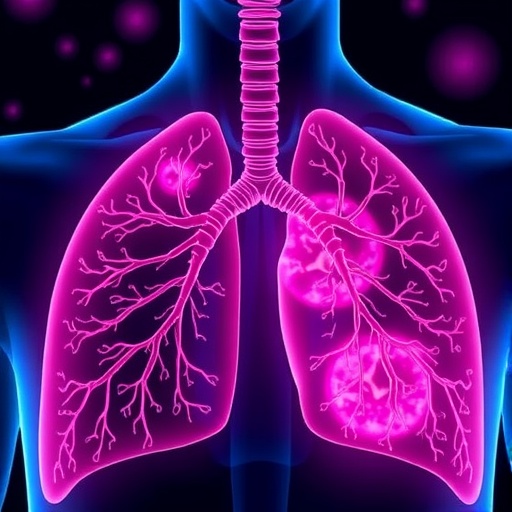Neonatal infections remain one of the most daunting challenges in contemporary neonatal intensive care, profoundly impacting morbidity and mortality rates among the most vulnerable patients: newborns admitted to level IV neonatal intensive care units (NICUs). These critical care centers, equipped to handle the most complex and high-risk cases, have long been arenas of intense clinical scrutiny due to the high burden of infectious complications encountered. Despite the extensive research in neonatal infections, a comprehensive epidemiological characterization specifically targeting bloodstream infections (BSI), urinary tract infections (UTI), and meningitis across multiple level IV NICUs in North America has been conspicuously absent—until now. The recent study by Nishihara et al. offers an unprecedented, granular insight into the epidemiology of bacterial and fungal pathogens causing these infections, unveiling patterns and trends that could reshape preventive strategies and therapeutic interventions.
The study harnesses a multicenter design encompassing an extensive dataset from level IV NICUs across North America, representing some of the sickest neonatal populations managed in the continent. By focusing on three principal infectious entities—bloodstream infections, urinary tract infections, and meningitis—it provides a panoramic view of pathogen prevalence, antimicrobial resistance patterns, and the intersection of bacterial and fungal etiologies. This comprehensive approach is critical, given that these infection types contribute disproportionately to the clinical decline of neonates, often resulting in prolonged hospital stays, increased antibiotic exposure, and higher mortality rates. The study’s findings challenge some longstanding assumptions about neonatal infection epidemiology, bringing to light nuanced variations in pathogen distribution across different NICUs, as well as emergent resistance profiles that complicate clinical management.
Bloodstream infections represent one of the most formidable challenges in NICUs due to their rapid onset and potential to cause systemic inflammatory responses that overwhelm neonatal physiology. Nishihara and colleagues documented not just the incidence rates of BSI but delved into the microbiological landscape in striking detail. Gram-positive cocci, including coagulase-negative staphylococci, dominate the bloodstream infection panorama, reaffirming their role as critical neonatal pathogens. However, the study also identified a noteworthy prevalence of Gram-negative organisms, such as Klebsiella species and Escherichia coli, whose increasing resistance traits underscore the urgent need for vigilant antibiotic stewardship and innovative treatment modalities. The interface of these bacterial pathogens with invasive devices and central lines, frequently employed in level IV NICUs, remains a focal point of infection control efforts.
.adsslot_LyZU2xA97j{ width:728px !important; height:90px !important; }
@media (max-width:1199px) { .adsslot_LyZU2xA97j{ width:468px !important; height:60px !important; } }
@media (max-width:767px) { .adsslot_LyZU2xA97j{ width:320px !important; height:50px !important; } }
ADVERTISEMENT
Urinary tract infections in neonates, although clinically subtler than bloodstream infections, pose a significant threat by acting as reservoirs for invasive pathogens and potential precursors to systemic spread. The study’s meticulous analysis elucidates an intricate relationship between urinary pathogens and the broader infection ecology within NICUs. Notably, fungi, particularly Candida species, emerge as significant contributors to UTIs in this population, revealing the multifaceted nature of neonatal infections. This fungal involvement, often overshadowed in neonatal infection research, demands heightened clinical vigilance and perhaps a reevaluation of antifungal prophylaxis protocols, especially in units witnessing elevated Candida incidence.
Meningitis in neonates represents a critically dangerous condition characterized by inflammation of the protective membranes surrounding the brain and spinal cord, often leading to dire neurological outcomes. Nishihara et al. provide a compelling synthesis of meningitis cases across the participating NICUs, highlighting the predominance of bacterial etiologies alongside a concerning, albeit smaller, representation of fungal meningitis. The study underscores the complexity of diagnosis in this cohort, where clinical signs are frequently non-specific, and laboratory confirmation can be delayed or inconclusive. This diagnostic challenge underscores the vital importance of rapid, sensitive, and specific molecular assays to facilitate timely intervention, a gap that modern NICUs must urgently address.
One of the hallmark contributions of this investigation lies in its in-depth evaluation of antimicrobial resistance patterns across diverse causative agents. The rise of multidrug-resistant organisms (MDROs) portends grave treatment challenges, particularly in neonatal populations where therapeutic options are already limited by toxicity profiles and developmental considerations. The researchers decoded resistance mechanisms prevalent in Gram-negative rods, including extended-spectrum beta-lactamase (ESBL) production and carbapenem resistance, which severely restrict treatment efficacy. Moreover, the persistence of methicillin-resistant Staphylococcus aureus (MRSA) and vancomycin-resistant Enterococci (VRE) within NICU environments further complicates therapeutic landscapes, demanding both aggressive infection control and novel antimicrobial development.
Fungal infections add an additional layer of complexity, as the study vividly illustrates. Neonates, especially those with low birth weights or prolonged NICU stays, are particularly susceptible to invasive candidiasis. The researchers’ data illuminate not only the prevalence but also species distribution, revealing shifts towards non-albicans Candida species, which often exhibit reduced susceptibility to first-line antifungal agents. This evolutionary dynamic spotlights an urgent need for ongoing mycological surveillance and the adaptation of empiric antifungal treatment protocols to local epidemiology, to optimize outcomes and curtail mortality rates.
Nishihara et al.’s study did not overlook the critical influence of neonatal host factors and clinical practices on infection risk. Prematurity, invasive device utilization, prolonged antibiotic therapy, and immunological immaturity jointly orchestrate a high-risk milieu that fosters pathogen invasion and persistence. Detailed patient-level data analyses reinforced that customized infection prevention strategies tailored to individual risk profiles are paramount. This precision approach could inform targeted probiotics, stringent catheter care bundles, and antibiotic cycling protocols that curtail resistance development.
In refining understanding of microbial dynamics, the study leveraged state-of-the-art genomic sequencing and rapid diagnostic platforms, offering real-time insights into pathogen evolution and transmission pathways within NICU settings. These technological innovations enable infection control teams to trace outbreaks with unprecedented accuracy, implementing timely containment measures. The intersection of genomics with clinical epidemiology heralds a new era in neonatal infection management, potentially transforming reactive paradigms into predictive prevention.
Furthermore, the regional variations noted across the myriad level IV NICUs underscore the influence of local ecology, institutional practices, and patient demographics in shaping infection profiles. The study advocates for the establishment of standardized surveillance frameworks across NICU networks, facilitating data sharing, benchmarking, and communal learning. Such collaborative infrastructures could accelerate identification of emerging threats and dissemination of best practices, ultimately elevating neonatal care standards continent-wide.
Beyond clinical implications, the economic ramifications revealed are profound. Prolonged hospital stays driven by infection-related complications inflate healthcare costs substantially. By quantifying this burden, Nishihara et al. present a compelling argument for intensified resource allocation towards infection prevention programs, staff education, and infrastructure improvements, positing that investment in these areas can yield significant cost savings and enhanced patient outcomes.
Crucially, the psychosocial impact on families grappling with neonatal infections in critical care settings cannot be overstated. Lengthened hospitalizations, procedural interventions, and uncertain prognoses exact a heavy toll on parental mental health and family dynamics. The study’s comprehensive epidemiological data provide a foundation for crafting supportive policies that address these dimensions, integrating family-centered care with rigorous clinical management.
In summation, the groundbreaking work of Nishihara and colleagues opens an essential window into the complex bacterial and fungal infectious landscape of level IV NICUs across North America. Through their meticulous epidemiological dissection, the study unveils both persistent challenges and emerging threats, while charting a forward-looking path anchored in precision medicine, innovative diagnostics, antimicrobial stewardship, and collaborative surveillance. The implications for neonatology are profound, promising not only to reduce infection burden but also to enhance overall survival and quality of life for the tiniest patients.
As neonatal care continues to evolve within the broader context of antimicrobial resistance and healthcare-associated infections, studies such as this are pivotal. They recalibrate clinical focus, catalyze research innovation, and inform policy formulation, collectively contributing to a future where neonatal infections are no longer a dominant source of morbidity and mortality. Nishihara et al.’s contribution resonates as a clarion call for the neonatology community and allied healthcare disciplines to harness data-driven insights, embrace cutting-edge technologies, and foster multidisciplinary collaboration in the ongoing battle against neonatal infections.
Subject of Research: Epidemiology of bacterial and fungal infections in level IV neonatal intensive care units (NICUs) across North America, specifically focusing on bloodstream infections, urinary tract infections, and meningitis.
Article Title: Epidemiology of bacterial and fungal infections among level IV neonatal units in North America
Article References:
Nishihara, Y., Zaniletti, I., Zenge, J. et al. Epidemiology of bacterial and fungal infections among level IV neonatal units in North America. J Perinatol (2025). https://doi.org/10.1038/s41372-025-02337-7
Image Credits: AI Generated
DOI: https://doi.org/10.1038/s41372-025-02337-7
Tags: antimicrobial resistance in neonatal carebacterial and fungal pathogens in NICUsbloodstream infections in newbornsepidemiology of neonatal infectionsinfectious complications in newbornslevel IV neonatal intensive care unitsmeningitis in neonatesneonatal infections in NICUsNorth American NICU studyprevention strategies for neonatal infectionstherapeutic interventions for newborn infectionsurinary tract infections in infants





